355 m away
Rectiligne Couloir
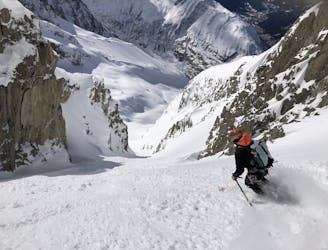
A steep, narrow couloir in wild high mountain terrain
Severe Freeride Skiing
- Distance
- 1.6 km
- Ascent
- 0 m
- Descent
- 777 m

A wonderful variation on the legendary Pas de Chèvre. Serious skiing in a spectacular big mountain environment
Freeride Skiing Difficult

Disclaimer - Unfortunately, the exit of the classic Pas de Chèvre has become increasingly dangerous in recent years. As climate change has caused an accelerating loss of ice in the Mer de Glace, the moraine walls surrounding the Pas de Chèvre exit couloir have become steeper and more lethal. The moraine here is now inherently unstable and prone to collapses of potentially large volumes of material. While it is still possible to find short windows in winter where cold temperatures and sufficient snow cover can allow skiers to pass through the moraine without excessive risk, these windows are increasingly fleeting and difficult to judge. It is therefore largely no longer advisable to use this exit.
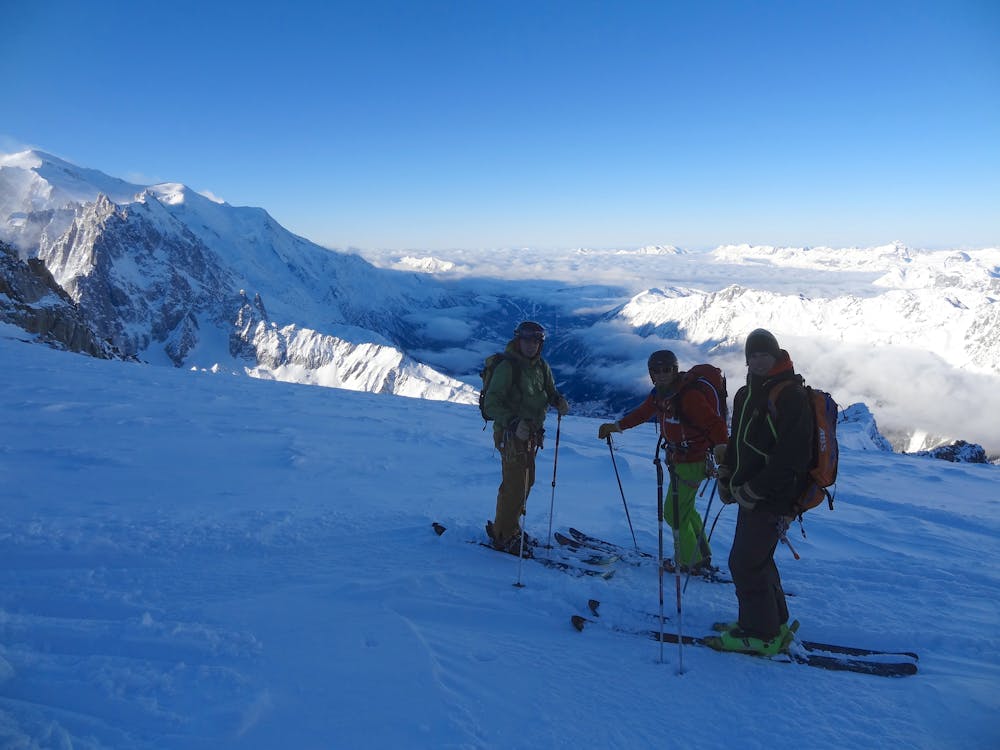
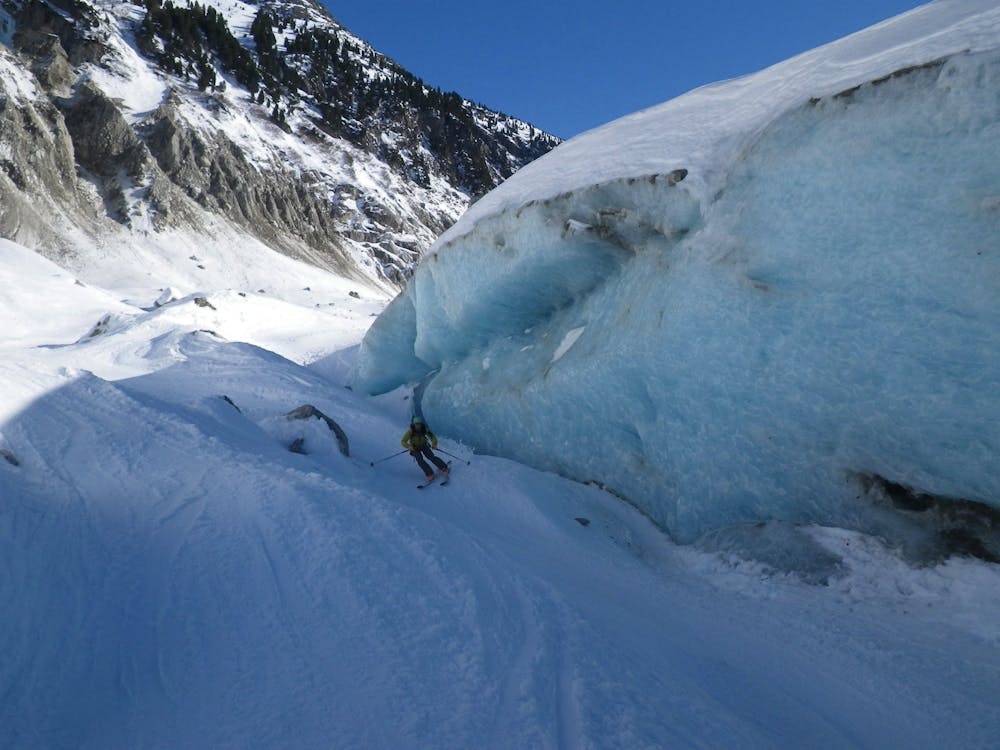
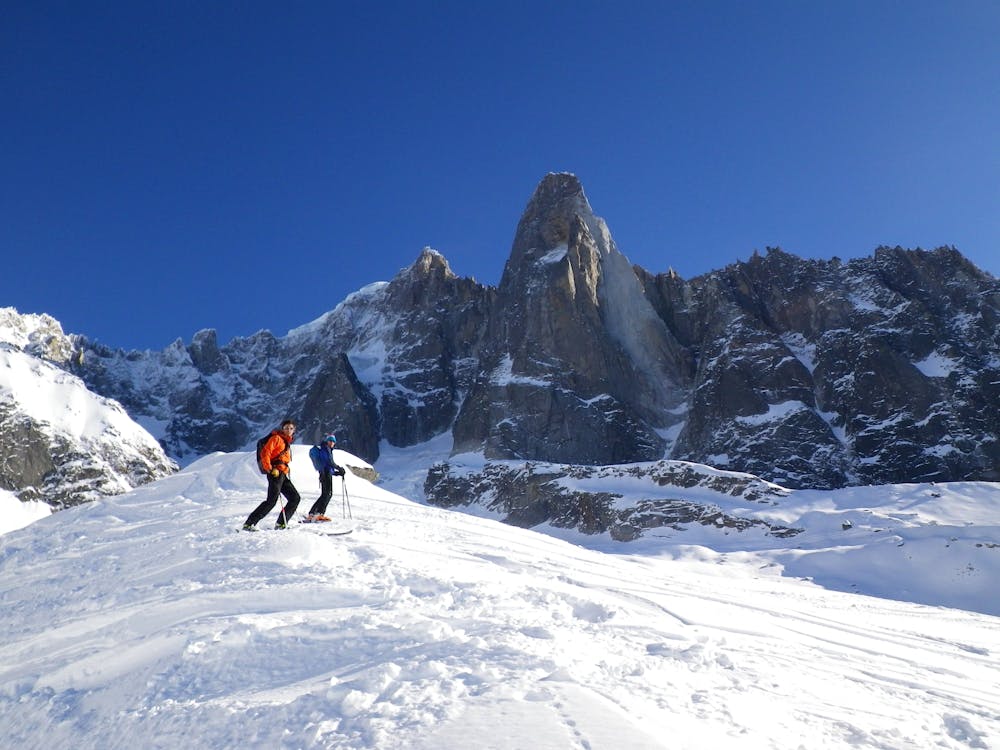
An alternative option is to locate an abseil line leading to the Mer de Glace from just below the Flame de Pierre ridge. After skiing the Pas de Chèvre, skin up a short way until on top of the Dru moraine. From here ski down heading south east towards the bottom of the Flame de Pierre ridge and locate the summer trail. Walk down the summer trail (it's not usually possible to ski it), taking care to safely downclimb a couple small steps and using crampons if needed. After dropping around 200 metres elevation, there is the first anchor to skier’s left side off of the path. It may be difficult to locate at first and consists of two bolts on a rock slab. Gaining the anchor is exposed, so take care. From here, make a series of 3 abseils; 50 meters, 55 and finally 30. Two 60 meter ropes are needed to get down.
Route -
This is magnificent run, with incredible views of the Dru and the Nant Blanc Face of the Aiguille Verte, but is very condition dependent. The key things to bear in mind are the aspect and the exit. Firstly the aspect- it faces S and SW so will transform quickly in the sun. The significance of this is that it can be very avalanche prone the first sunny day after fresh snow. Also if it hasn't snowed for a while it will refreeze each night and you are well advised to time it well, allowing the slope to soften in the sun before you go down. The original exit is low and again sunny, from the lateral moraine down to the Mer de Glace. This is down a rubbly moraine gully that needs good snow cover. Without it you find a completely unstable steep moraine slope with large boulders regularly bouncing down it. Hence you need to know the state of the exit before you set off down - do not be encouraged by the many tracks on the top slope unless you are certain of the exit. You are on a glacier so make sure you are equipped, prepared and have practised crevasse rescue, however unlikely you think falling in a crevasse is- it is possible! A minimum would be each person to have harness, axe, crampons, an ice screw, 3 prussiks, several screwgates, a pulley/DMM Revolver karabiner, a couple of slings and 2 30m ropes in the group. A more modern simple solution substituting for many of the above might be 2 Petzl RAD systems in the group. If you have any doubts about this ski with an IFMGA Mountain Guide.
From the foot of the iron ladders descending from the Grands Montets lift, cross under the barriers and descend easy glacial slopes, gently convexing down. You bear slightly down and R to take you into a steeper bowl, usually crossing a windlip to enter it. The main Pas de Chevre continues out R then back L. Your line goes down here then back L to enter a completely separate bowl. This will usually be the steepest part and once in the bowl it is safest to stick skiers' R. Be sure you are entering the Pas de Chevre variant and not the Rectiligne- it will soon become obvious! After a narrowing it opens up to fantastic open slopes. You can go straight down and R to rejoin the main Pas de Chevre tracks, or, more logically you cross to the L over a lateral moraine of the receded glacier above. From here, follow the main Pas de Chevre line.
Difficult
Serious gradient of 30-38 degrees where a real risk of slipping exists.
355 m away

A steep, narrow couloir in wild high mountain terrain
Severe Freeride Skiing
537 m away

A classic Grands Montets line; open, varied, great skiing
Difficult Freeride Skiing
595 m away
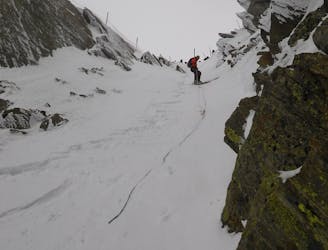
One for the poseur! A much-eyed line down a spectacular couloir. Not to be under-estimated
Severe Freeride Skiing
735 m away

An imposing line down the small glacier at the top of the front face of the Grands Montets
Difficult Freeride Skiing
736 m away
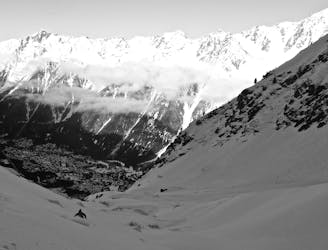
A legendary Chamonix off-piste run. Serious skiing in a spectacular big mountain environment
Difficult Freeride Skiing
777 m away

A great alternative to the main bowl lines with fantastic skiing and reliable powder.
Difficult Freeride Skiing
824 m away

A short steep hanging snowfield, approached by a scramble over the Grands Montets summit
Severe Freeride Skiing
893 m away

A wide open glacier run in a small dip below the bounding cliffs
Moderate Freeride Skiing
918 m away

Slyly crosses the ridge from the Bochard to find fine slopes on skier's right of the Lavancher bowl
Difficult Freeride Skiing
1 km away

A serious glacier run in the spectacular Argentiere Glacier basin
Difficult Freeride Skiing
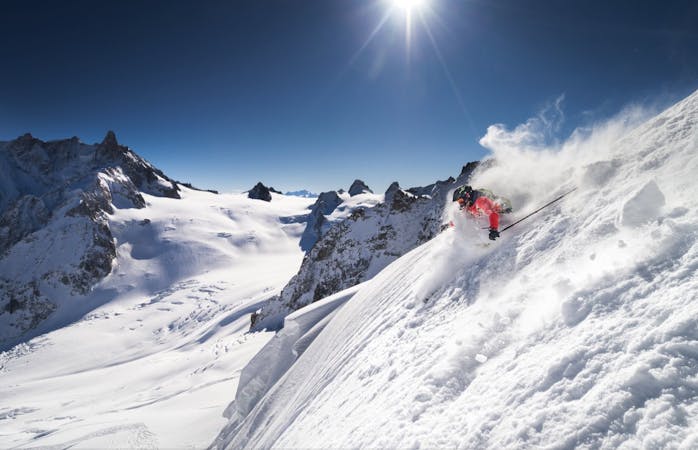
10 routes · Freeride Skiing

10 routes · Freeride Skiing